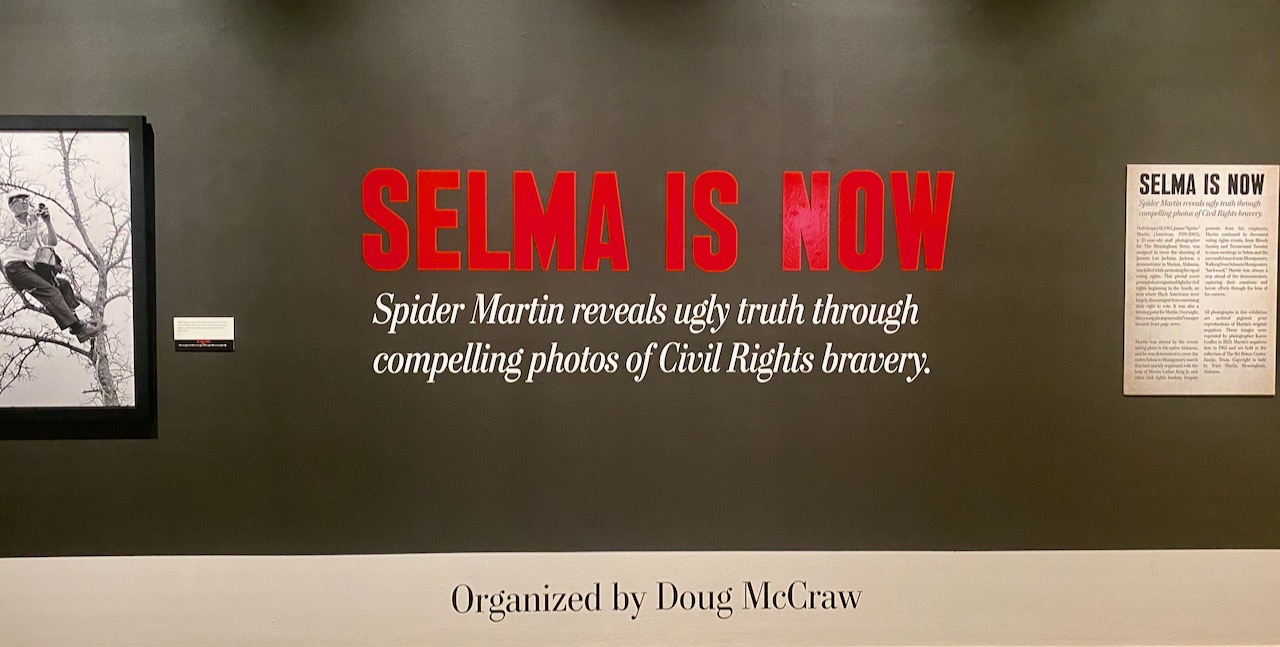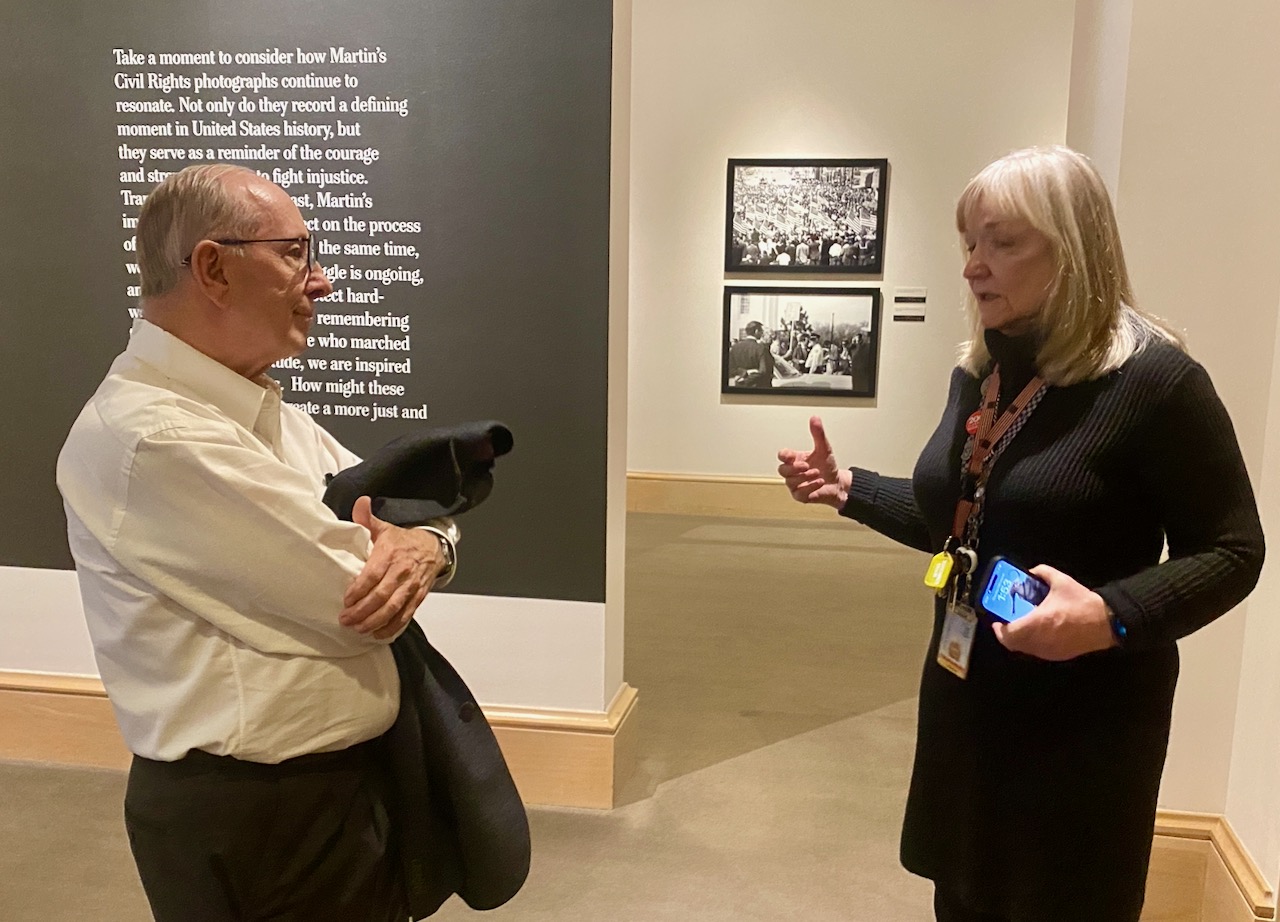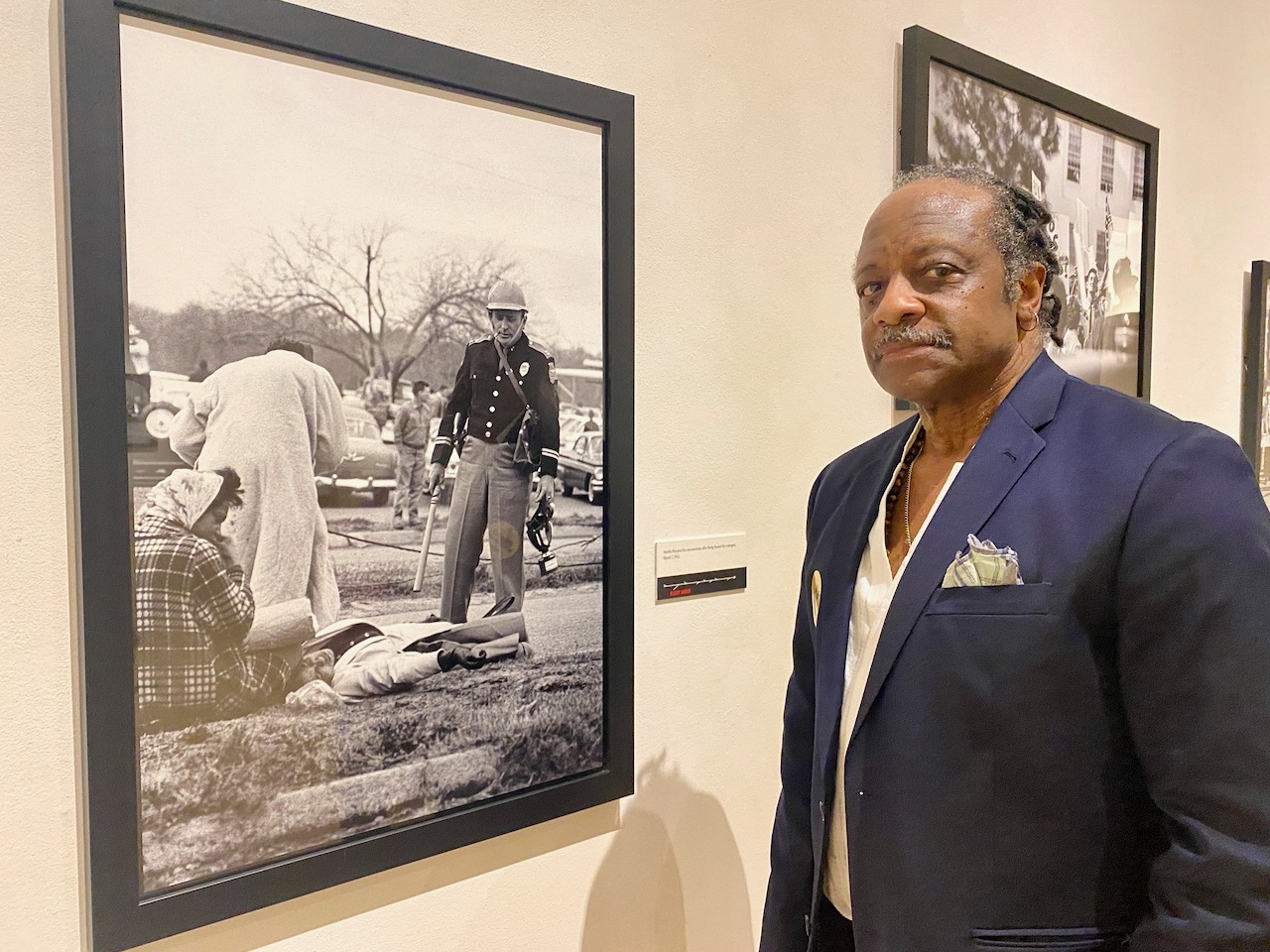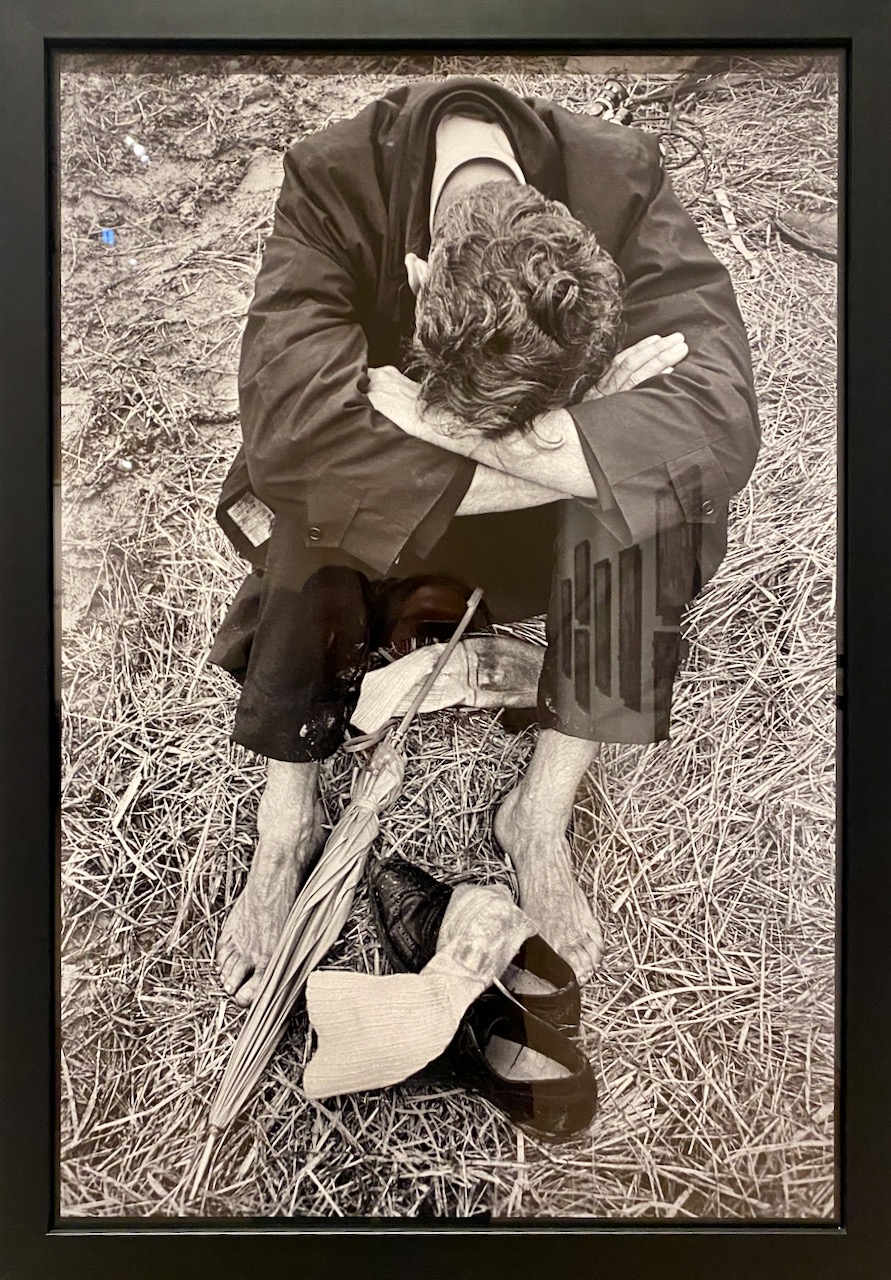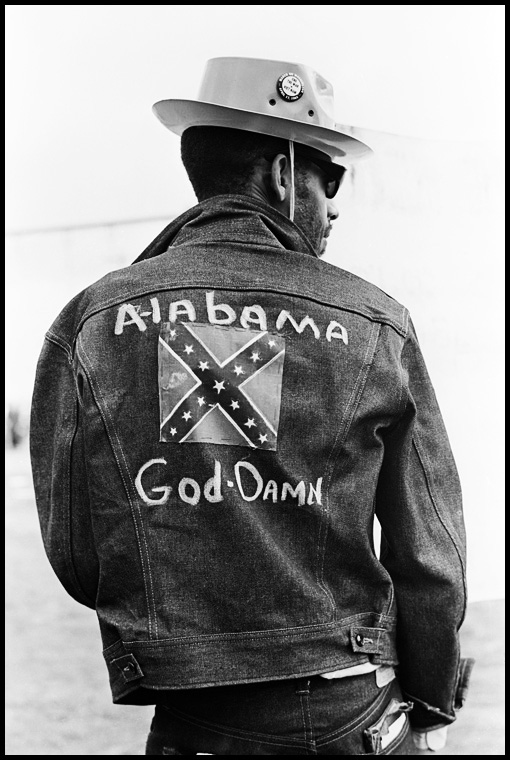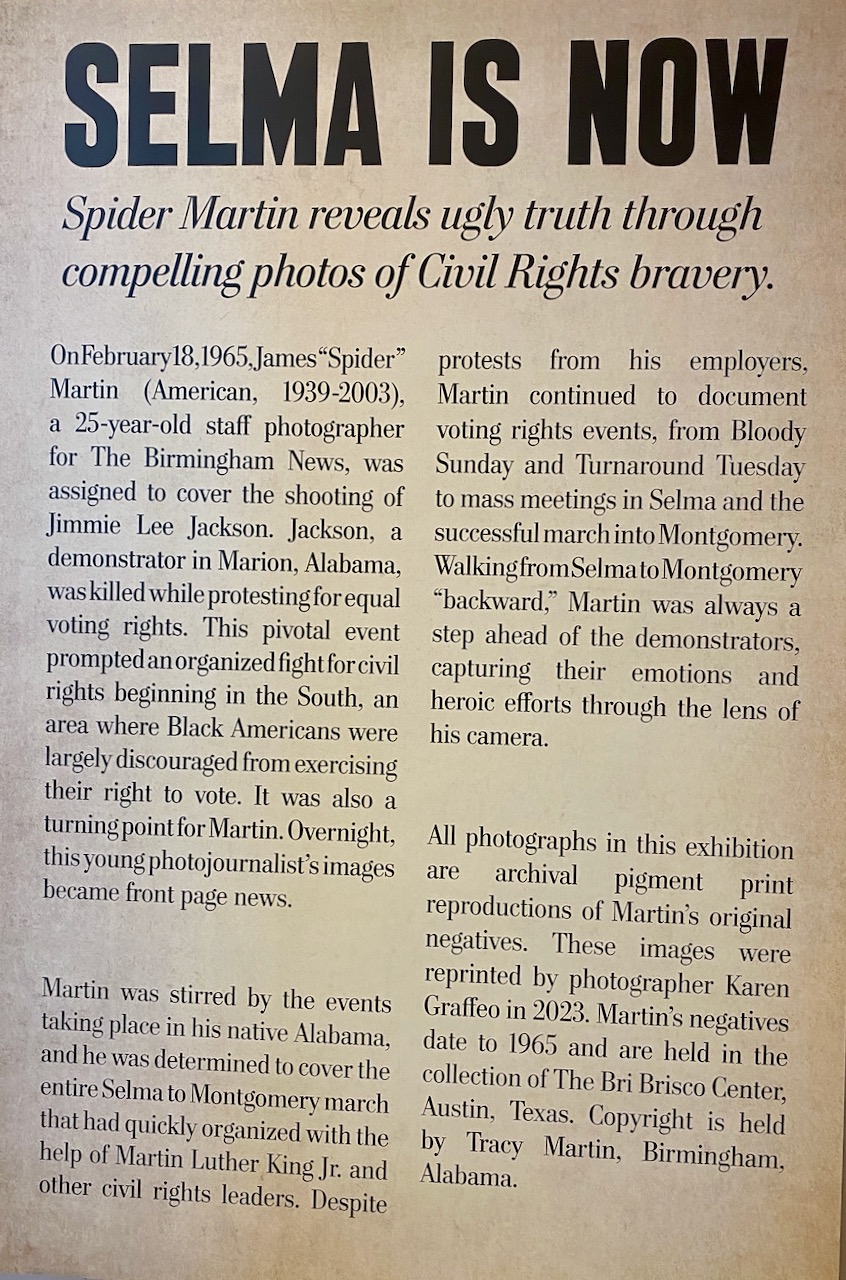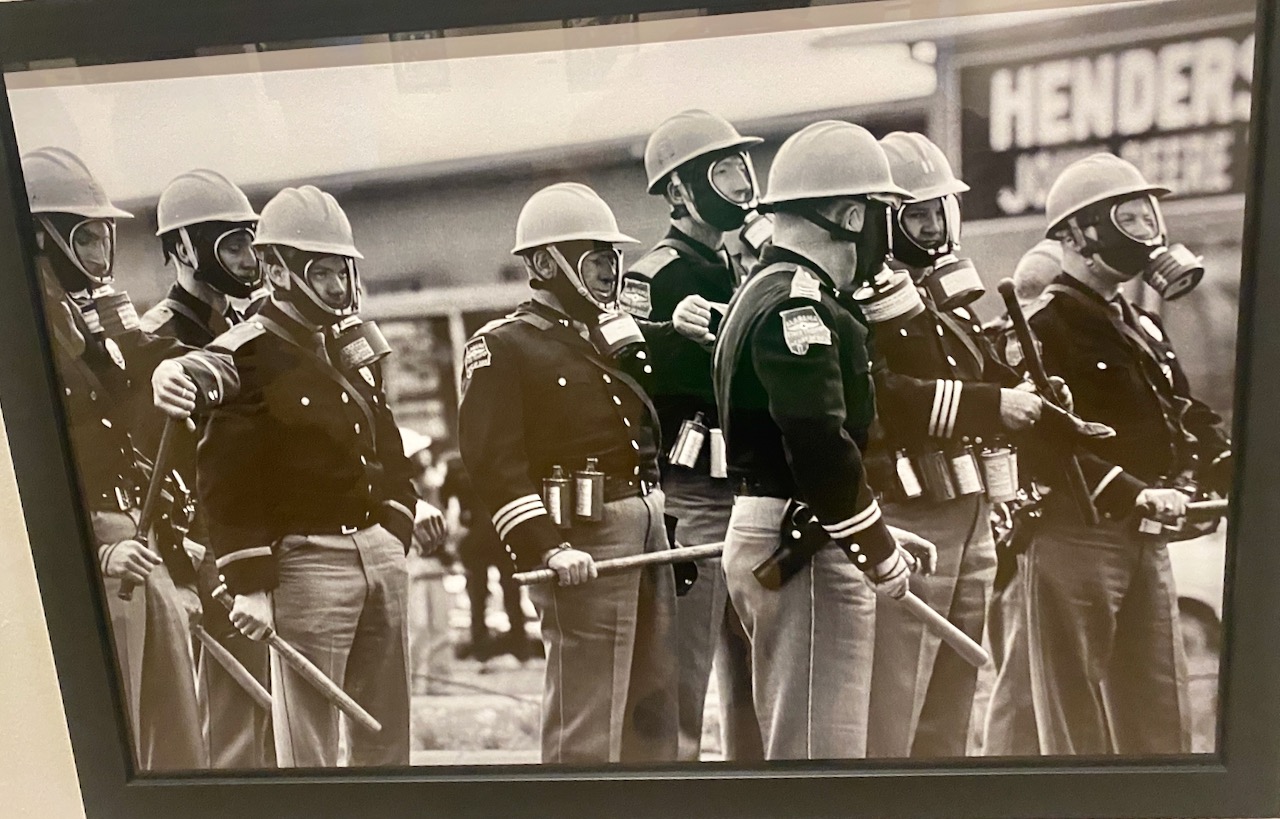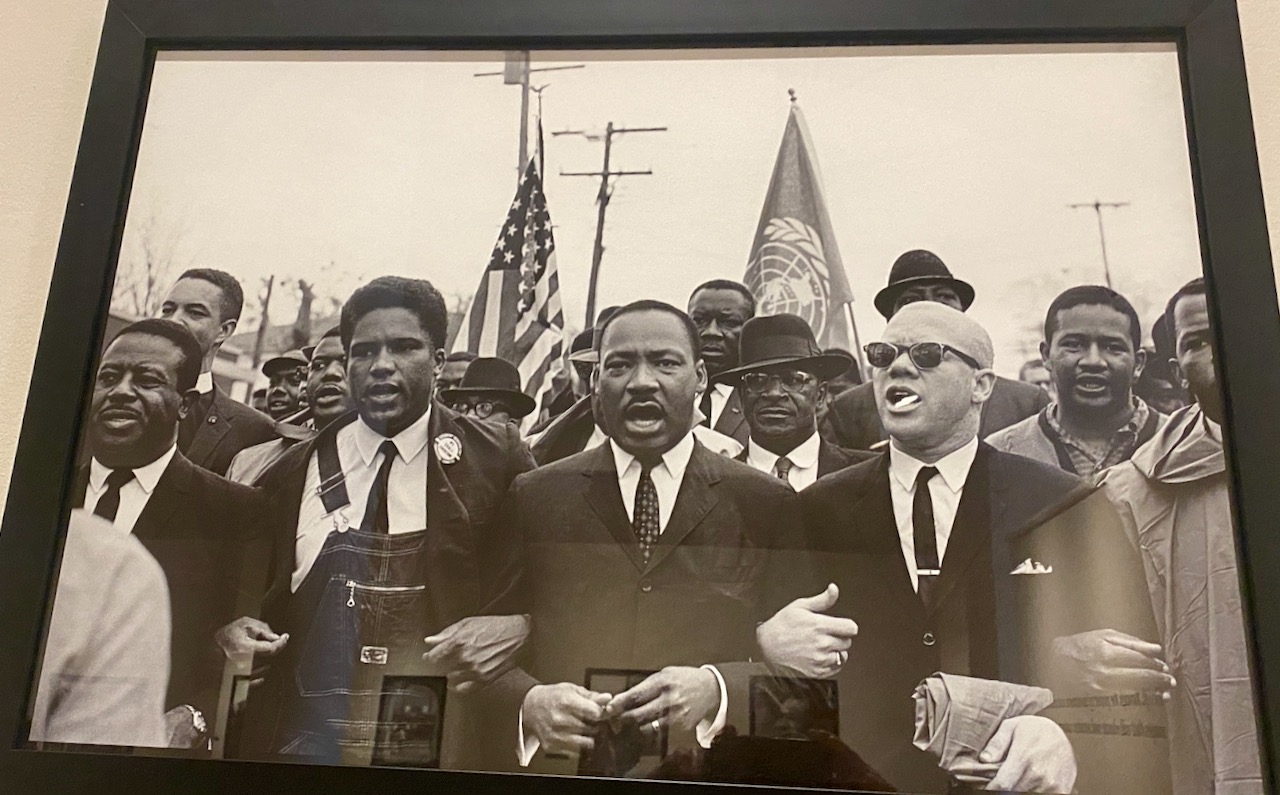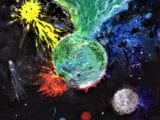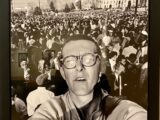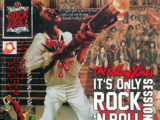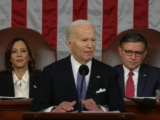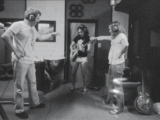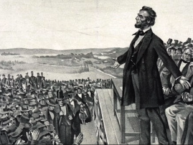ON THE RADIO – APR, NPR – “Bloody Sunday” through the lens of Spider Martin
By Glynn Wilson –
MONTGOMERY, Ala. – As people get ready to commemorate the 60th anniversary of Bloody Sunday, the Selma to Montgomery March and passage of the Voting Rights Act of 1965, the Montgomery Museum of Fine Arts just opened a show of photographs taken by Spider Martin in those days that impacted the perceptions of people the world over at the time, yet still speak powerfully today about the never ending struggle for freedom from oppression.
Curator Margaret Lynne Ausfeld speaks of the beautiful yet troubling images digitally restored on a grand scale that, along with the coverage on the new medium of television, “really impacted Americans’ understanding of what was happening at that time.”
Bill Ford, president of the museum board, said he was most impacted by the image of a woman laying on the ground as a state trooper holding a billy club stood over her.
“The cruelty and the callousness of the photograph is so visceral,” he said. “It hit me so hard. It brings back the sense of hopelessness and terror that existed at that time for people of color.”
The pictures and the history are “powerful,” says Amy Hastings of Montgomery. “It never ceases to move me.to tears. It’s a story that needs to be told and retold. It’s a truth that we simply can’t let pass.”
Christopher Birson of Birmingham focused on a picture of a white man from Maine who is shown sitting down to rest along the march, and shows the blisters on his feet.
“Even today we have some of the same fight. I just wish my people would understand we’re not in this alone.”
Sydnei Jarman, museum marketing and public relations manager, focused on a picture of a Black man wearing a denim jacket with an emblem of the Confederate battle flag on the back, along with the words “Alabama God-Damn,” a reference to the Nina Simone song “Mississippi God-Damn.”
“I love this picture because it’s such a beautiful interjection of how music and art and clothing … helped make this movement what it is … everything had to come together … with Nina Simone as the soundtrack to the movement.”
Karen Graffeo, the graphic artist who worked on the restoration of the 60-year-old 35 millimeter negatives, said there were several that were emotional for her, especially one showing movement leader John Lewis in a rain coat. When she zoomed out to look at dark spots on the coat, she realized it was blood.
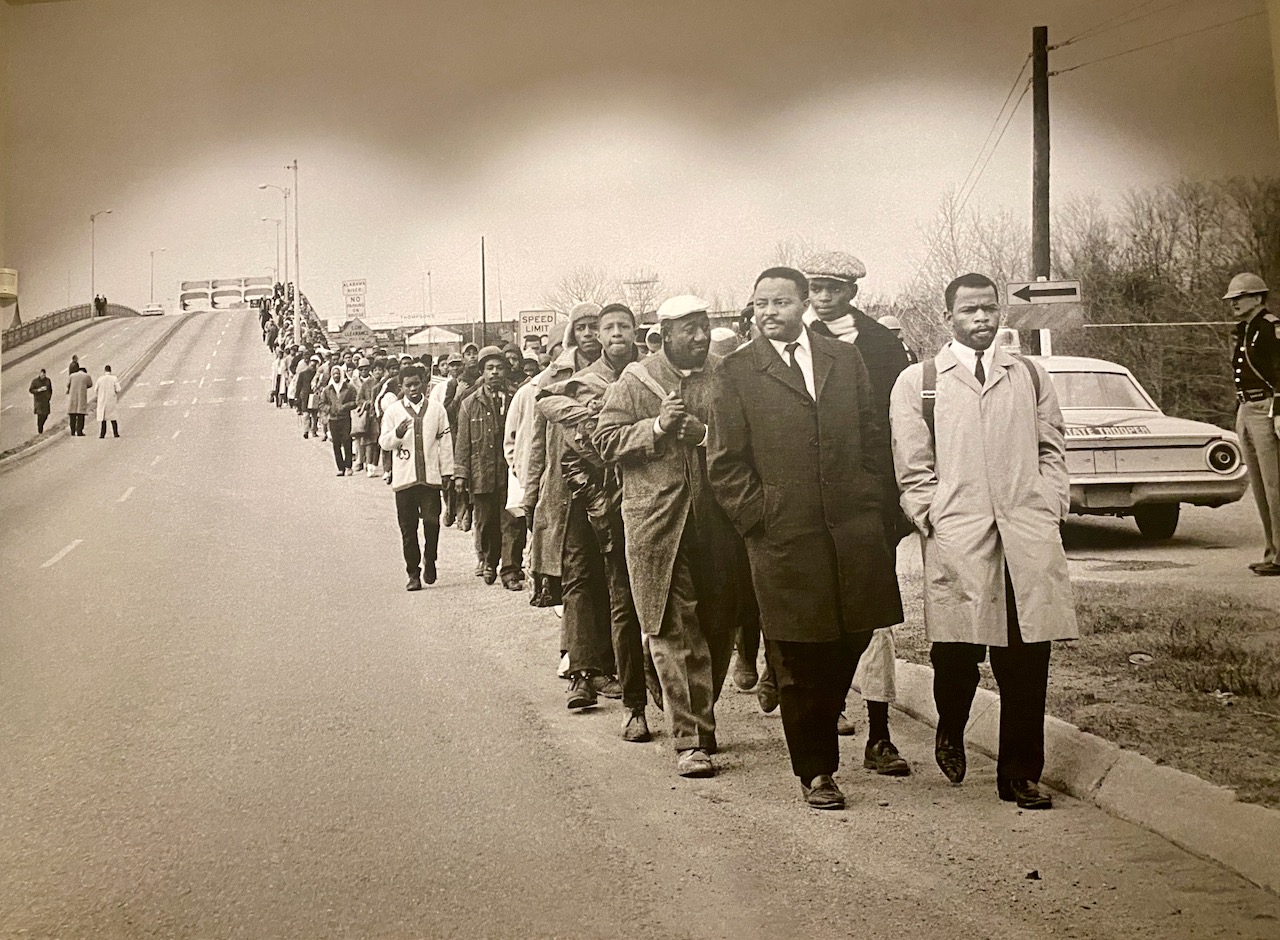
Grand scale, life-sized photo of the Civil Rigthts marchers making is successfully across the Edmund-Pettus bridge in Selma in 1965: Glynn Wilson for NAJ/APR – original photo by Spider Martin
“And I think we are in one of those times now when this body of work functions like the angel of history.”
Spider Martin’s daughter Tracy was at the event, but refused to comment for the story.
Glynn Wilson, for Alabama Public Radio
ON THE RADIO – APR, NPR – “Bloody Sunday” through the lens of Spider Martin
More PHotos
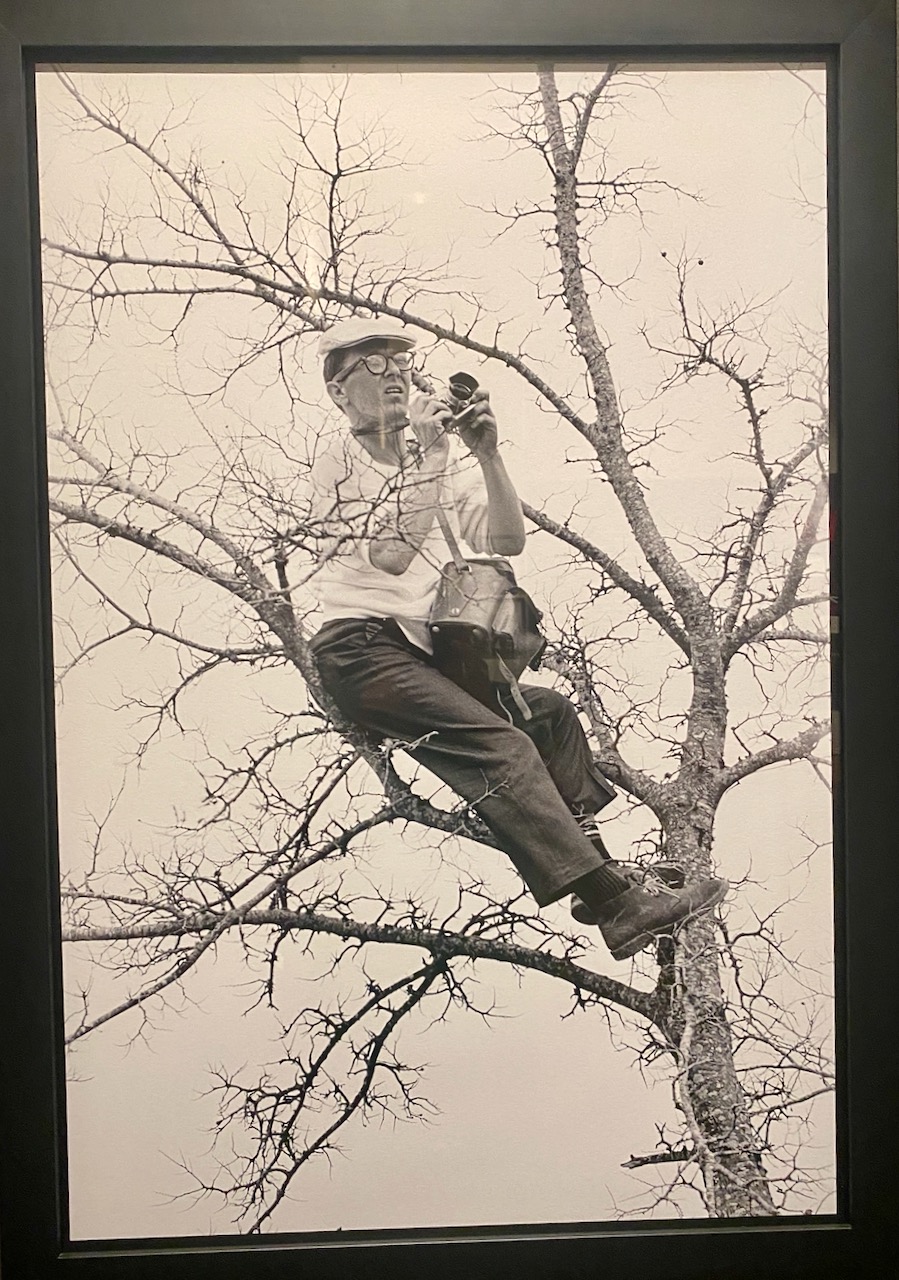
Photographer Spider Martin dropping rolls of film out of trees for Time magazine and other national publications: Glynn Wilson for NAJ/APR
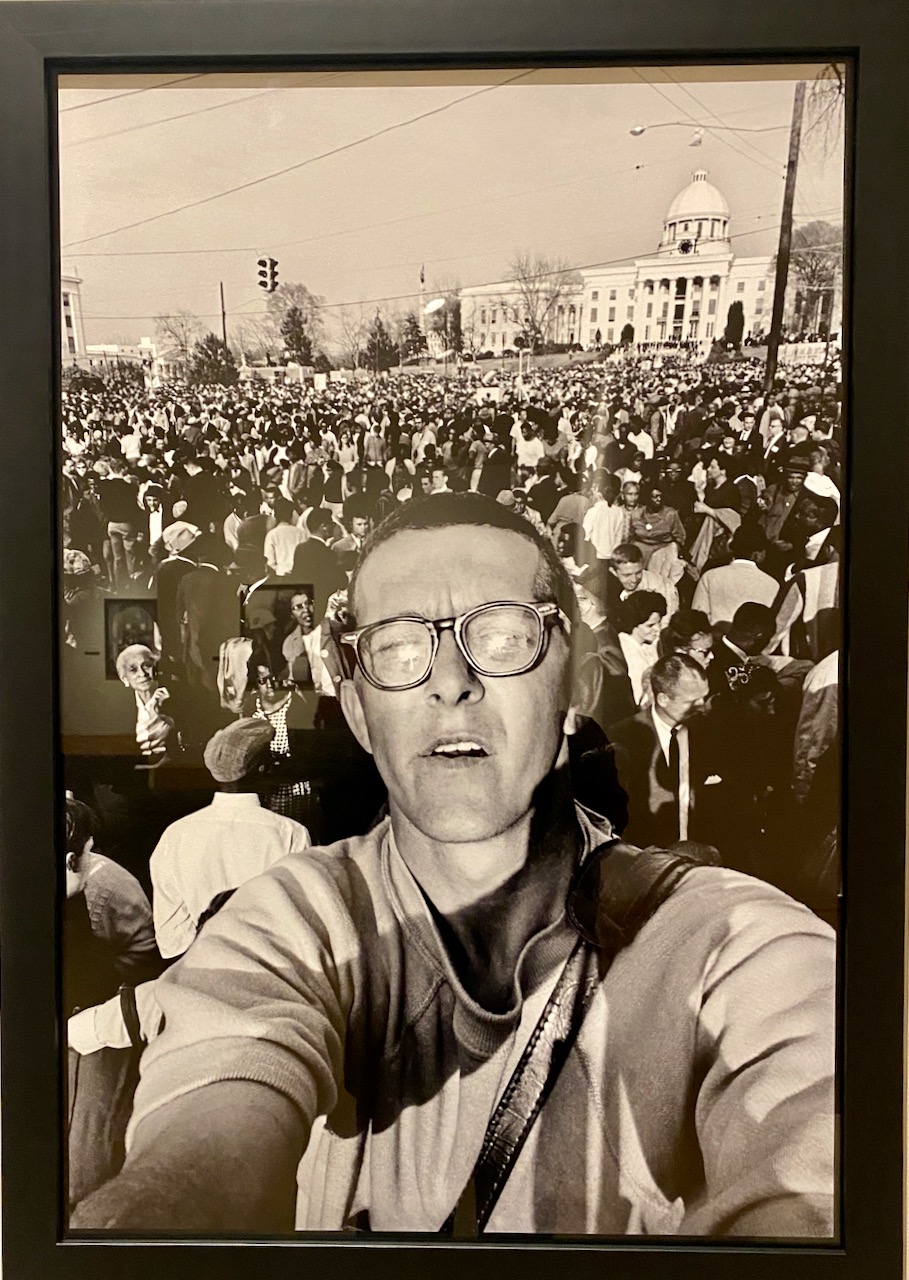
THE FIRST SELFIE? – In 20th century journalism classes we were taught never to take pictures of ourselves for the newspaper. It was considered arrogant and unethical. Of course Facebook ruined that forever. But that never stopped my old friend Spider Martin, who found ways to include himself in the picture, usually hidden. He would setup the camera on a tripod and set a timer to snap the shot. On March 25, 1965, he went all the way and put himself in the picture in front of the crowd gathering on the Alabama Capitol steps in Montgomery, where Martin Luther King led thousands of nonviolent demonstrators after a 5-day, 54-mile march from Selma, where the Student Nonviolent Coordinating Committee (SNCC), and the Southern Christian Leadership Conference (SCLC) had been campaigning for voting rights: Glynn Wilson for NAJ/APR – original photo by Spider Martin


